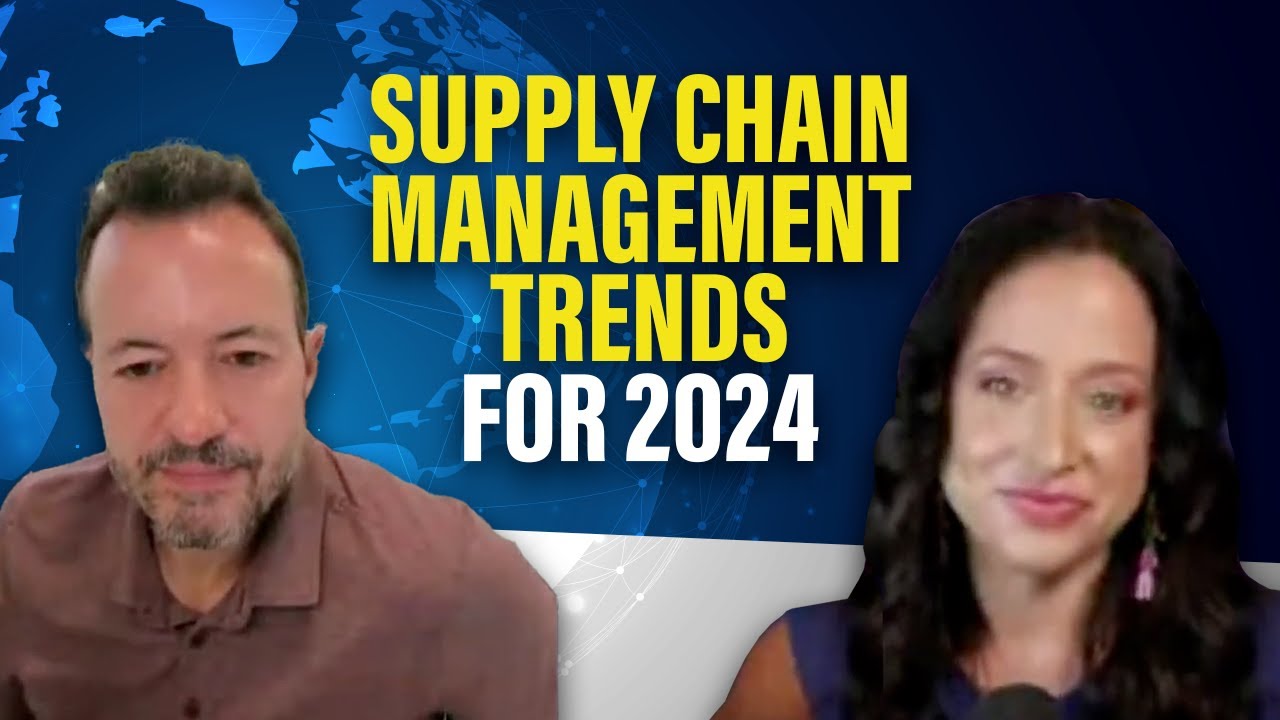Smooth Operator: Streamlining North American Supply Chains
Summary
TLDR本次讨论会以'Smooth Operator: Streamlining North American Supply Chains'为主题,旨在探讨如何加强北美供应链的韧性并促进投资。来自不同领域的专家,包括制造业、物流、政府和研究机构的代表,就如何利用《美墨加协定》(USMCA)和近岸外包现象来深化三国间的合作进行了深入讨论。讨论涉及了墨西哥吸引外国直接投资的成功经验、供应链的区域整合、劳动力培训、基础设施建设、能源获取、边境管理和交通物流等多个方面。专家们强调了政府与私营部门合作的重要性,并提出了一系列旨在提升墨西哥竞争力和吸引外资的策略和建议。
Takeaways
- 🌐 **供应链安全**:北美经济的供应链安全是至关重要的,美国、加拿大和墨西哥都在积极推动议程,以促进投资并增强关键领域的供应链弹性。
- 🤝 **合作机遇**:探讨如何加强北美三国之间的合作,利用近海外包现象,深化合作,以利用国际贸易提供的机遇。
- 🇲🇽 **墨西哥的优势**:墨西哥拥有与50个国家的自由贸易协定,以及与美国的区域供应链整合,使其在供应链中占有独特地位。
- 📈 **外国直接投资**:墨西哥的外国直接投资稳定性强,自2018年以来新投资显著增长,显示出对墨西哥的长期信任和合作。
- 🛠️ **制造业的重要性**:墨西哥在制造业方面具有比较优势,其地理位置、市场接近性和劳动力质量对外国投资者具有吸引力。
- 🚧 **基础设施建设**:墨西哥需要继续投资基础设施,包括交通、能源、水资源和住房,以支持经济增长和吸引更多的外国直接投资。
- 💼 **劳动力发展**:提高劳动力培训和参与度,尤其是女性劳动力的参与,是墨西哥提高竞争力和吸引投资的关键领域。
- 🛃 **边境效率**:改善边境基础设施和通关流程,减少货物运输的延误,对提高供应链效率至关重要。
- 🚚 **物流挑战**:物流行业面临的挑战包括司机短缺和运输能力限制,需要公私部门合作解决。
- 🌿 **环境可持续性**:随着对环境、社会和治理(ESG)的重视日益增加,墨西哥需要发展可再生能源,以支持新投资并满足国际公司的环保目标。
Q & A
如何加强北美供应链的安全性和弹性?
-北美供应链的安全性和弹性可以通过促进美国、加拿大和墨西哥之间的投资和合作来加强。关键部门的供应链复原力对北美经济至关重要,三国都在积极追求议程以增强这一点。
墨西哥在吸引外国直接投资方面有哪些优势?
-墨西哥拥有与50个国家的自由贸易协定,包括北美以及其他多边和双边协议,这使得墨西哥与贸易伙伴的供应链高度整合。此外,墨西哥的外国直接投资稳定性和新股权投资的增长也是其吸引外资的优势。
新莱昂州如何继续吸引外国直接投资并加强区域供应链?
-新莱昂州通过制定新宪法提供明确的规则和法治,与私营部门合作制定2040年总体规划,以及建设高速公路和提升人力资本等措施来吸引外国直接投资并加强区域供应链。
墨西哥的哪些政策可能会削弱其吸引外国投资的能力?
-墨西哥在能源和矿业等领域的某些国内政策可能会与创造积极商业环境的目标背道而驰,从而削弱其吸引外国投资的能力。
如何提高墨西哥的竞争力并吸引更多的外国直接投资?
-墨西哥可以通过投资于人民的教育、提高劳动力参与度,特别是女性劳动力,以及改善基础设施和减少繁文缛节来提高其竞争力并吸引更多的外国直接投资。
新莱昂州如何平衡大量外国直接投资带来的结构性压力?
-新莱昂州通过投资基础设施,如高速公路、住房、学校和医院,以及与联邦政府合作解决水资源和能源问题,来平衡大量外国直接投资带来的结构性压力。
美国近期的政策,如通胀减少法案和芯片法案,将如何促进北美的生产?
-这些激励措施将鼓励美国公司在墨西哥进行更多的投资,利用近岸外包的趋势,从而加强北美的生产能力和供应链。
墨西哥在提高运输和物流行业的效率方面面临哪些挑战?
-墨西哥在提高运输和物流行业的效率方面面临的挑战包括改善边境基础设施和通关流程,以及解决司机短缺和吸引和留住人才的问题。
如何通过政策改进来促进墨西哥的商业环境?
-通过减少不必要的监管和繁文缛节,提高司法系统的效率,以及挑战和改进那些阻碍商业发展的法规,可以促进墨西哥的商业环境。
墨西哥如何成为发展中国家中外国直接投资的首选目的地?
-墨西哥需要在全球范围内推广自己,利用地缘政治优势,团结一致,抓住近岸外包的机遇,并通过教育和培训提高劳动力的技能,同时改善基础设施和商业环境。
Outlines

This section is available to paid users only. Please upgrade to access this part.
Upgrade NowMindmap

This section is available to paid users only. Please upgrade to access this part.
Upgrade NowKeywords

This section is available to paid users only. Please upgrade to access this part.
Upgrade NowHighlights

This section is available to paid users only. Please upgrade to access this part.
Upgrade NowTranscripts

This section is available to paid users only. Please upgrade to access this part.
Upgrade NowBrowse More Related Video

Supply Chain: Supplier Selection & Performance Management

The Critical Role of Supply Chains in Business and Society

ASCM's Top Trends in Supply Chain for 2024

Supply Chain and S&OP Challenges in 2024

AI-Driven Supply Chains: 3 Cases | MIT SCALE Webinar | Spanish

Supply Chain Management Trends for 2024 and Beyond
5.0 / 5 (0 votes)
